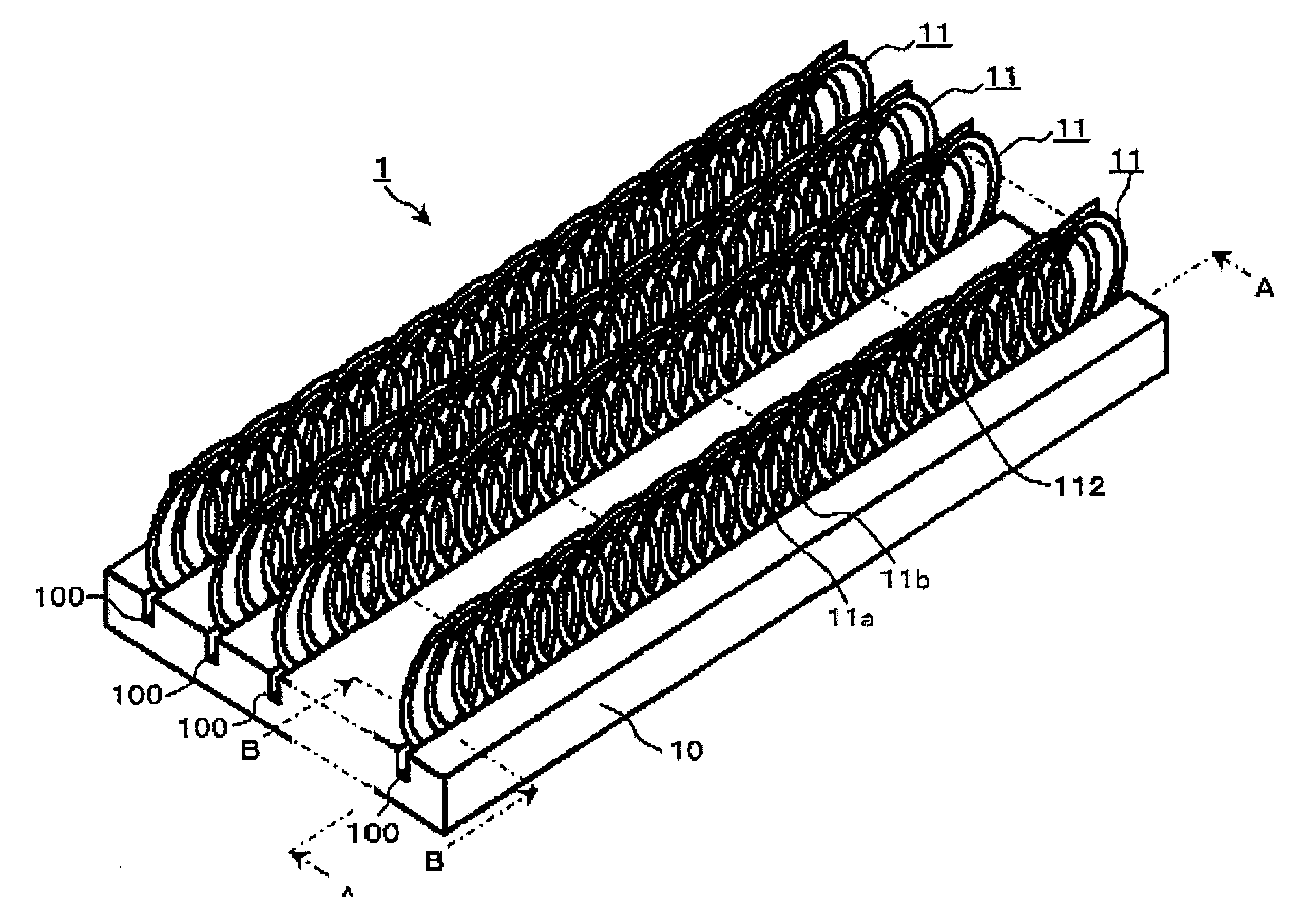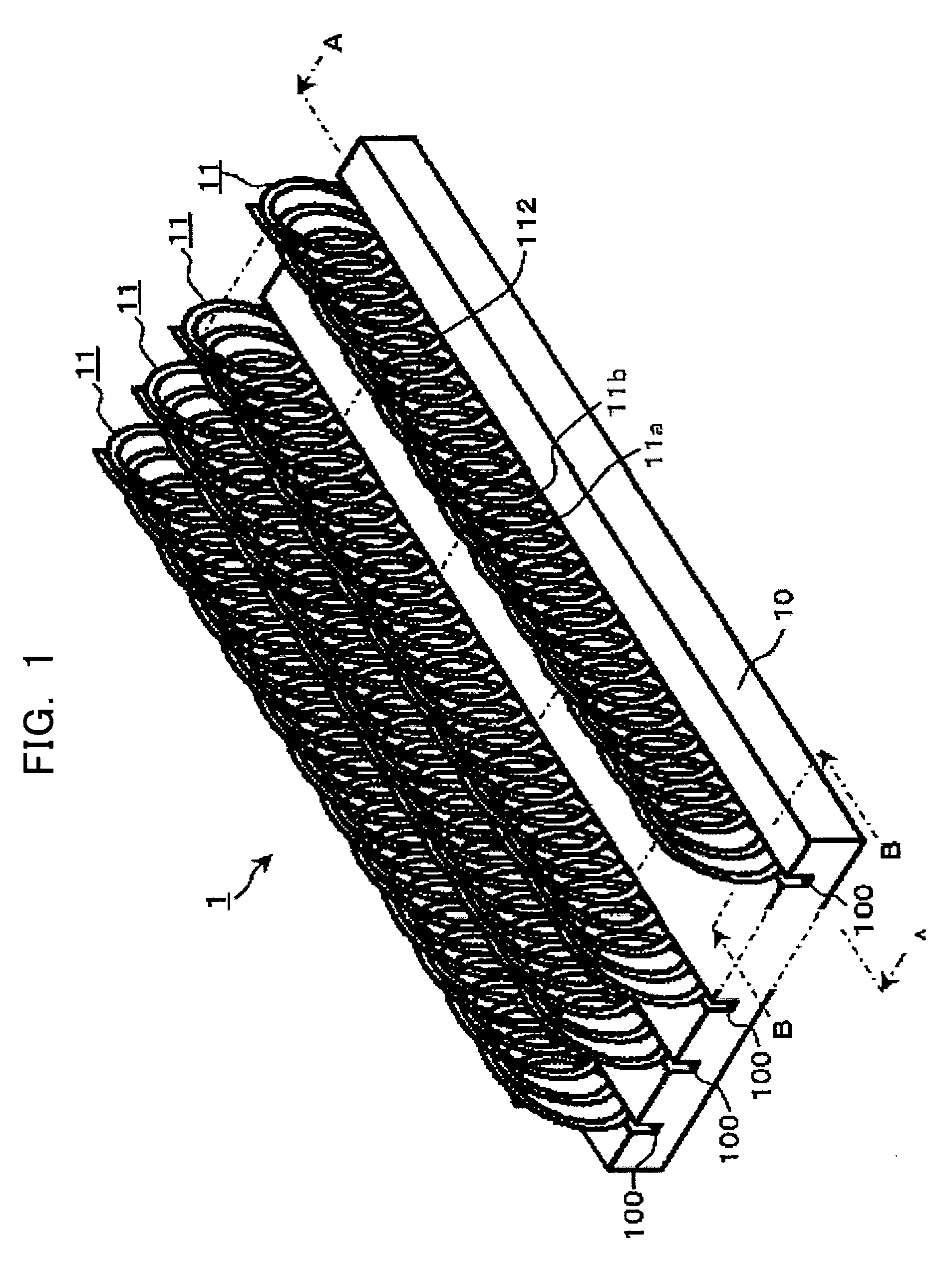Heat sink
a heat sink and heat sink technology, applied in the direction of semiconductor/solid-state device details, lighting and heating apparatus, laminated elements, etc., can solve the problems of shortening the life of semiconductors, deteriorating the performance of devices, and possible breakage, so as to increase the heat dissipation performance of heat sinks and heat dissipation. the effect of large surface area and high heat dissipation performan
- Summary
- Abstract
- Description
- Claims
- Application Information
AI Technical Summary
Benefits of technology
Problems solved by technology
Method used
Image
Examples
Embodiment Construction
[0113]Hereinafter, the present invention will be described in detail.
[0114]First, the first embodiment (1) of the invention will be described with reference to FIGS. 1 and 2. The heat sink in FIG. 1 generally comprises a base plate 10 with a plurality of grooves 100, and fins 11 formed of metal wire coil arranged along the grooves 100. In FIG. 1, only one row of fins 11 is illustrated and the other rows of fins are partially abbreviated for ease of explanation.
[0115]The fins 11 are formed by flattening the metal wire coil. Adjacent coil elements 11a and 11b are in close contact with each other at contact parts 113 through which heat diffuses rapidly throughout the fins 11. Thus, the metal wire is formed in a coil so as to provide a large surface area to the fins, thus increasing the heat dissipation performance.
[0116]The fins 11 made of the metal wire coil as shown in FIG. 2 have end parts 11c and 11d of the flat surface 111 to increase the density of the coil elements. Consequently...
PUM
 Login to View More
Login to View More Abstract
Description
Claims
Application Information
 Login to View More
Login to View More - R&D
- Intellectual Property
- Life Sciences
- Materials
- Tech Scout
- Unparalleled Data Quality
- Higher Quality Content
- 60% Fewer Hallucinations
Browse by: Latest US Patents, China's latest patents, Technical Efficacy Thesaurus, Application Domain, Technology Topic, Popular Technical Reports.
© 2025 PatSnap. All rights reserved.Legal|Privacy policy|Modern Slavery Act Transparency Statement|Sitemap|About US| Contact US: help@patsnap.com



